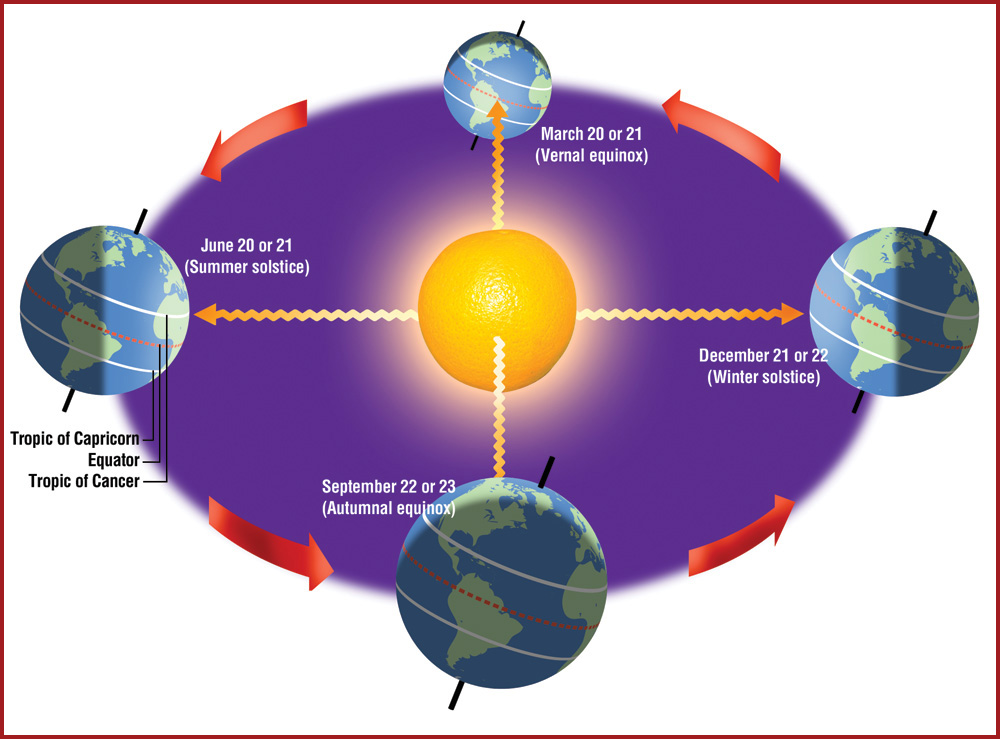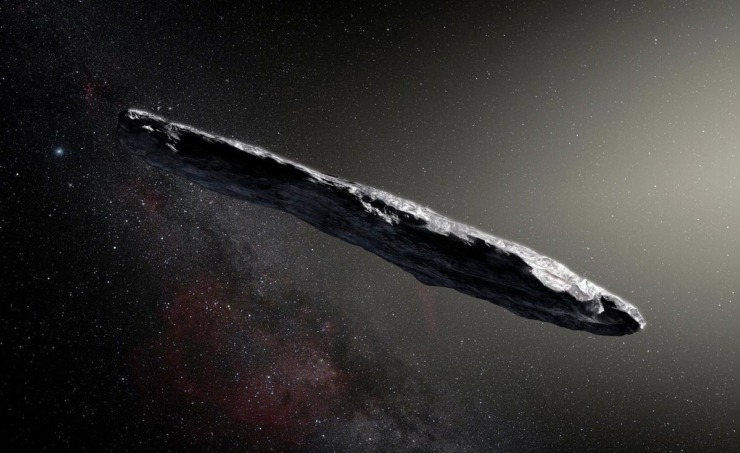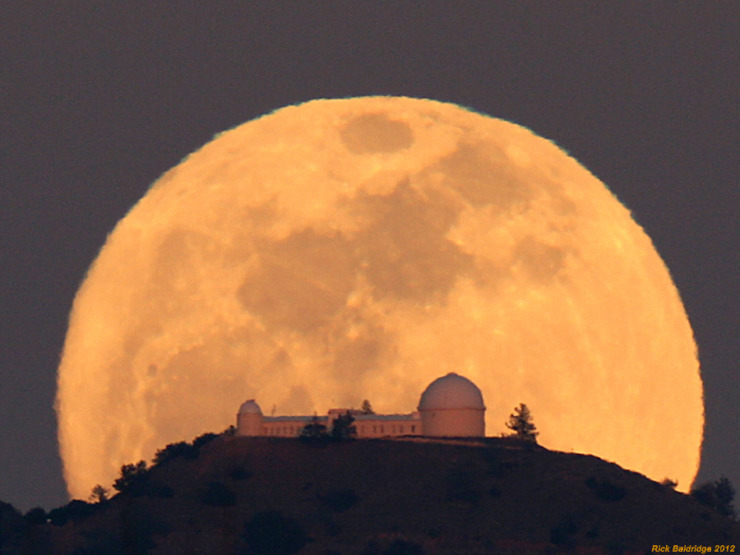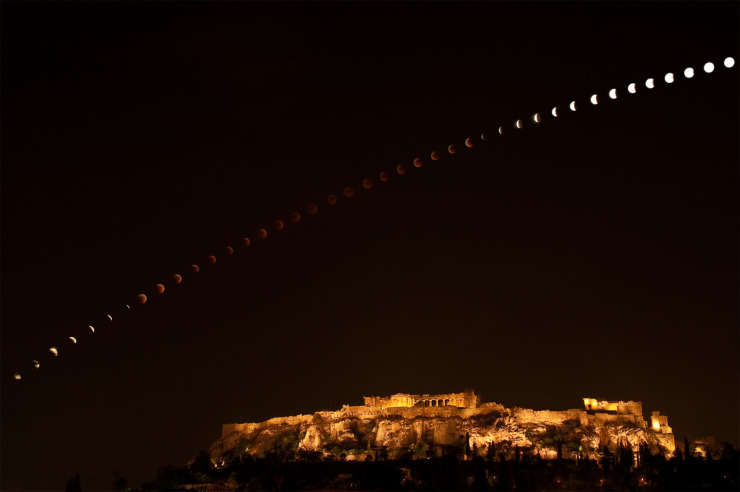The Summer Solstice for 2025 is Friday, June 20, at 7:41 pm Pacific time. This is the day we experience the longest daytime and shortest nighttime of the year, in the Northern Hemisphere. On our calendar, it’s considered the official beginning of summer. It is also the day that the Sun crosses the sky in the highest arc of the year.
The differences between the length of the day and night get really extreme in the regions near the Earth’s poles. At and around the north pole, the Sun never sets at this time of year, while at or near the south pole, the Sun never rises! (The idea of the Sun never setting at high latitudes is celebrated in the song “The Sun Won’t Set” from Stephen Sondheim’s jewel of a musical “A Little Night Music:” https://www.youtube.com/watch?v=-cZr5PDG0_w )
Normally, planets should orbit with their axis straight, so they rotate in the same way that they revolve around the Sun. What happened to the Earth? Astronomers now think that our planet got hit by another planet-sized world, very early in the history of the solar system, while violent encounters were more common. Then, like many accident victims, the Earth couldn’t straighten out again. So we continue to orbit the Sun leaning over, and experiencing the differences that the seasons bring.
If you haven’t heard this explanation before, don’t feel bad. Many people think, or even learned, that the seasons are caused by the Earth’s orbit not being a circle. Instead it’s a shape called an ellipse, which is more oval than a circle. The key idea is that it’s summer when we are closer to the Sun in that ellipse. But there are serious problems with that explanation.
The thing is, in 2025, the Earth was closest to the Sun on January 4th, a date on which we were in the midst of winter. Also, if distance were the reason for the seasons, then Australia would have the same seasons as the U.S., instead of the opposite seasons (that we observe it to have.) All observations point to the idea that distance from the Sun is a very unimportant factor in our seasons. If you want to know the reasons for the seasons, you have to blame that ancient accident our planet suffered.
Please have a great summer (as much as you can in these crazy times.)




